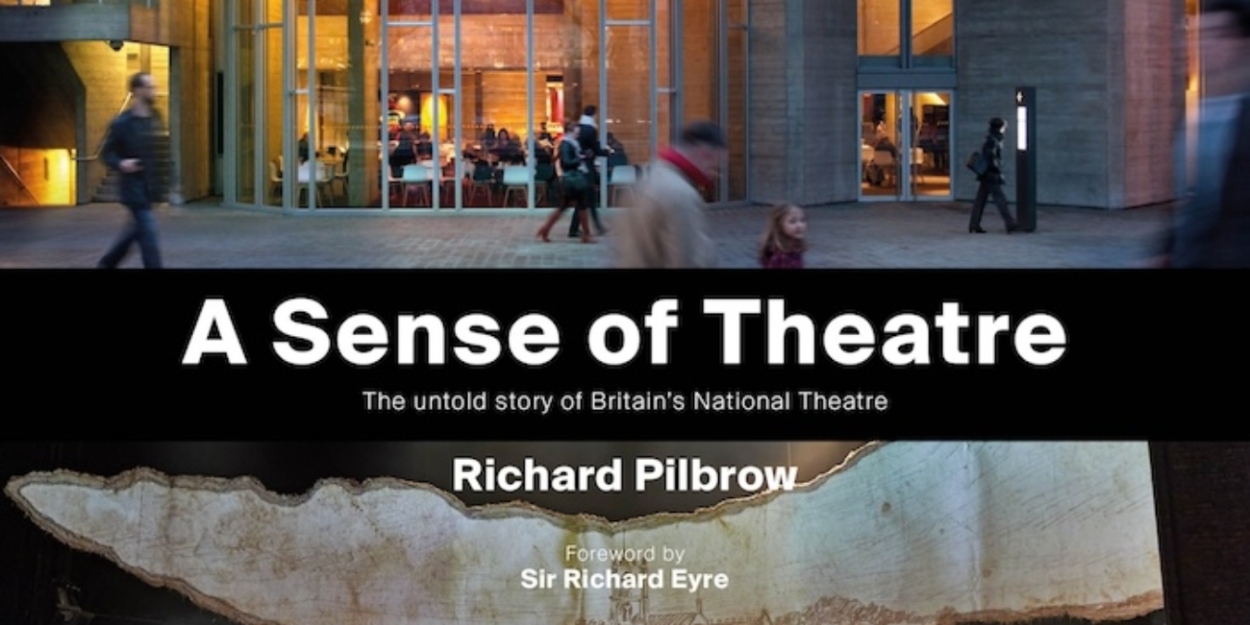Book Review: A SENSE OF THEATRE: THE UNTOLD STORY OF BRITAIN'S NATIONAL THEATRE, by Richard Pilbrow
Detailed new book chronicles the birth, challenges and triumphs of the National Theatre

In the summer of 1962, Sir Laurence Olivier invited lighting designer Richard Pilbrow to "sort out the bloody awful lighting" at Chichester Theatre two days before it opened. Pilbrow replied there was nothing he could do in so short a time. "Well, you're no bloody use, are you?" Olivier quipped.
However, Olivier contacted Pilbrow later that spring, this time with an offer to become lighting director for the newly created National Theatre Company at The Old Vic, its temporary abode while new premises were built on the South Bank.
Pilbrow worked with Olivier on the construction and design of The National Theatre, while also lighting shows, including the launch production, Hamlet, directed by Olivier and starring Peter O'Toole; and the world premiere of Tom Stoppard's Rosencrantz and Guildenstern are Dead.
Olivier also brought Pilbrow onto The National Theatre Building Committee (where he sat alongside luminaries such as Sir Peter Hall, Peter Brook and Michael Elliott), mainly to help mediate between committee experts and the architect Denys Lasdun.
A Sense of Theatre is partly Pilbrow's first-person account of the birth and progression of the controversial, concrete structure on the Thames. And it's also part comprehensively, detailed archive of meetings, diaries and observations of those involved. Weighing in at 529 pages, there is a hell of a lot of detail.
Some of it is fascinating. For instance, I now know that it took 13 years from the passing of The National Theatre Act of 1949 for Olivier to be appointed to bring The National Theatre –the building and the theatrical company – to some form of reality.
Another nugget is that the newly formed Building Committee was given just six weeks to write the brief for the new theatres. This inevitably led to confusion, Pilbrow points out, and meant going back to first principles to ask: what is a theatre? (You can almost hear the groans from the upper circle).
However, sometimes I felt I was reading an academic dissertation. I imagine only hardcore theatre nerds and historians are likely to be gripped by an entire chunky section dedicated to the minutes of Building Committee meetings. Mercifully, there are gaps, as some of the minutes went missing. This loss might be mourned by some, but enthusiastically applauded by others (including this reader).
On the other hand, there is interesting historical background, with the dream of a National Theatre starting back in 1848, when there was support for the National Gallery and British Museum. There wasn't the same enthusiasm for a national theatre, as it "was still a place of moral turpitude", according to some opposers, including Pilbrow's Methodist grandfather.
Ultimately, it took The Blitz to lead to consideration of how post-war London might be built. What better place for The National Theatre than a bombsite on the southern banks of the Thames?
Today's audiences might well relate to the challenges of carrying out the immense task of creating a national arts centre in the English capital. Challenges that are ironically very contemporary. They include: a succession of weak governments, an oil crisis, struggles with funding, strikes, galloping inflation, and criticism from arts commentators and the public alike.
While we learn of how the opening of the new Manchester indoor entertainment arena, Co-op Live, has recently been delayed, we discover late openings are no new trend. The projected public opening of The National Theatre drifted well into 1976.
Poor Sir Peter Hall – Director of The National Theatre after Olivier stood down – had to contend with the building's first official strike of stagehands, the bureaucracy of obtaining a licence from the Greater London Council and even possible sabotage. Technical cables were cut and a hose reel turned on to cause flooding. Accident or vandalism? We'll never know.
Equally, there are ongoing mentions in Pilbrow's tome of sorting out the acoustics (generous building proportions and the use of concrete doesn't help audiences hear actors), creating the drum revolve for the Olivier Theatre stage (an important and admired innovation) and tweaking things that didn't quite work, like making the foyers more user-friendly.
Other highlights of this meaty book – which would make a magnificent gift for theatre lovers everywhere – are an excellent foreword by Sir Richard Eyre, timelines of events, drawings and plans, information on architect Lasdun's tribulations, extracts from Sir Peter Hall's diary (superb) and lists of productions under various National Theatre directors. It's marvellous seeing how much has been accomplished.
I particularly enjoyed quotes from actors – the folk who ultimately have to use the stages and building. While Diana Quick appreciated the smart dressing room block and luxurious rehearsal rooms, Albert Finney wasn't quite so sure about the new-fangled National Theatre.
In response to Peter Brook saying a theatre should be like a violin – "its tone comes from period and age," Finney responded with: "Who'd build a violin out of f-ing concrete?"
Who, indeed? Well, Pilbrow, Olivier, Lasdun and everyone else involved in the creation of this bold, national arts undertaking.
It's worth persevering to the end, as outgoing National Theatre director (2015 - 2025) Rufus Norris dares to answer the question that was on the Building Committee's lips five decades ago. "What's a theatre? It's a story house."
A Sense of Theatre: The Untold Story of Britain's National Theatre is published by The Society for Theatre Research and Unicorn Publishing. It is available in hardbook (£45.00) from the The National Theatre bookshop.
Image Credit: The Society for Theatre Research and Unicorn Publishing
Reader Reviews

Videos

